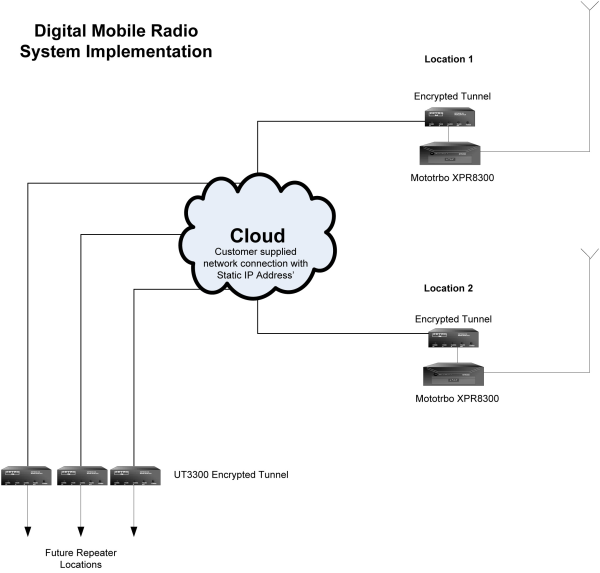 Tom's Tech Talk (#10): Digital Mobile Radio System Implementation
Tom's Tech Talk (#10): Digital Mobile Radio System Implementation
In today’s Digital Mobile Radio systems, networking is playing a key role in implementation of these radio systems. Years past connectivity was through an in house set of wires or over the local telephone companies telephone line. With the evolution of radio, not only has product changed, but the way we need to get the information between sites has changed.
In the early years, radio equipment was controlled by Direct Current (DC) traveling down the telephone lines between dispatch and the radio at a tower. The voice and DC current would travel the line to the equipment. The equipment in turn would interpret the DC current as one of the following:
1) Transmit on F1
2) Transmit on F2
3) Monitor the Channel
Upon interpretation, the equipment would key up and send the voice over the RF channel. As this is a very simplified version, it worked well for many years.
As telephone companies began upgrading their equipment in the Central Offices, DC current was not capable of being passed through the switching cards. Instead radio evolved to sending tones down the line to control the transmitters:
1) Get ready to key and hold the transmitter – 2175Hz
2) Key on F1 – 1950hz
3) Key on F2 – 1850Hz
Now within our ever advancing digital world, networks transporting data have become commonplace. With that we now require networks from the customers side to have specific characteristics to allow this data to not only be sent between sites, but securely with priority on voice. Many customers already have either their own network or the have a network through their local phone company or data reseller. With these networks we can ride part of these data pipes which allow the customers to reuse existing infrastructure to carry radio traffic.
Specifications in the form of Latency (the amount of time it takes from Point A to Point B), Jitter (Variation of Intepacket Arrival Time), Bandwidth (Amount of Data required), Static IP Address (Fixed), Dynamic IP Address (Random), UDP Protocol or Multicast Protocol. If not configured correctly, loss in not only voice can be heard, but RF equipment may stop from transmitting.
Be sure to implement a proper strategy when deploying your DMR systems to insure you get the greatest use and the safest use from your radio equipment.
Have a tech talk question for Tom? Need help implementing a proper strategy?
Contact us for assistance today.
 This article was written by Tom Treichler, Director of Sales & Service at Chicago Communications. Tom has over 30 years of experience in the industry with a background in engineering, system integration, and wireless broadband. If you have any questions for Tom, or another representative at ChiComm, please contact us.
This article was written by Tom Treichler, Director of Sales & Service at Chicago Communications. Tom has over 30 years of experience in the industry with a background in engineering, system integration, and wireless broadband. If you have any questions for Tom, or another representative at ChiComm, please contact us.

